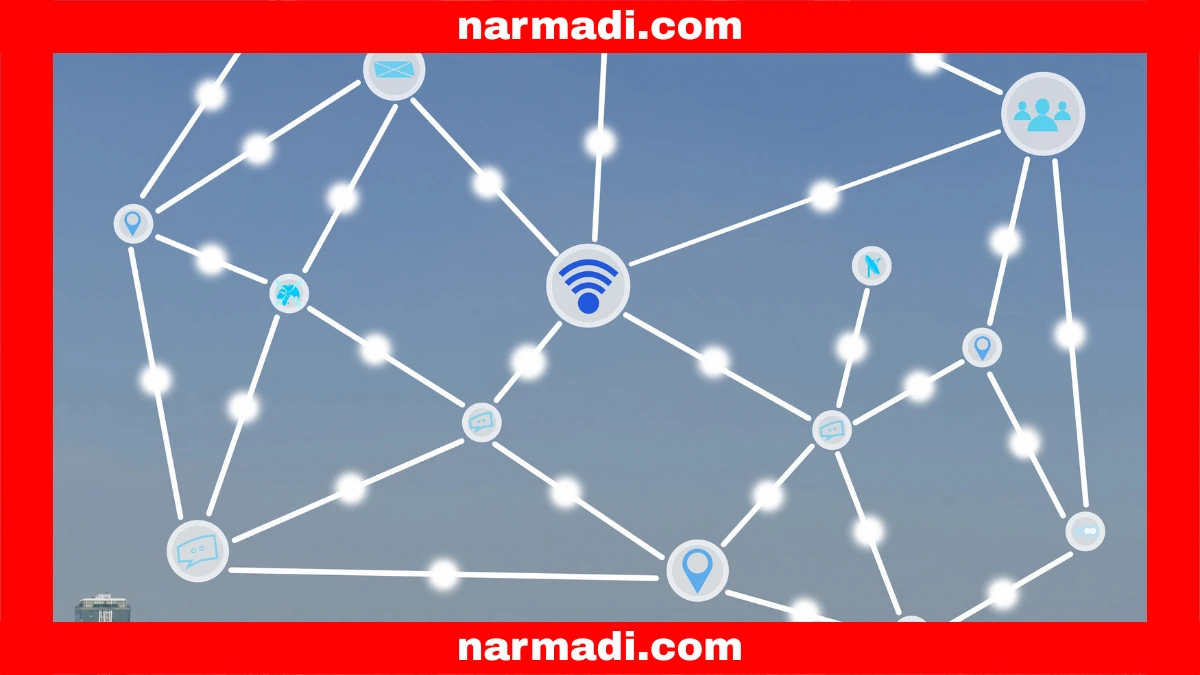Wireless technology has a major impact on everyday life. The wireless network implementation that allow devices to connect without cables has had a major impact.
Various technologies that support and provide practical solutions for the wireless network implementation on an industrial scale include WiFi, Bluetooth, and RFID.
In this article, you will explore several examples of wireless network implementations that have been applied in everyday life.
Also Read
Table of Contents
Wireless Network Implementation
Examples of wireless network implementations are WiFi, Bluetooth, Tethering, RFID and NFC, Radar, WSN, and IoT. The following is an explanation regarding the implementation of wireless networks in everyday life:
1. WiFi

The first example of wireless network implementation is WiFi. It is one of the most well-known and widely used wireless network implementations.
WiFi allows devices such as computers, laptops, smartphones, cameras, and others to connect to the internet without the need for cables. Its application is very broad, covering households, offices, and public places.
Wireless networks are divided into four types, namely Wireless Personal Area Network (WPAN), Wireless Local Area Network (WLAN), Wireless Metropolitan Area Network (WMAN), and Wireless Wide Area Network (WWAN).
Examples of use
- WPAN: Connecting wireless headphones to a smartphone
- WLAN: WiFi networks at home and at work
- WMAN: Internet access throughout the city
- WWAN: Internet connection on mobile phones and tablets
2. Bluetooth
Bluetooth is an example of the application of a Wireless Personal Area Network (WPAN) type of wireless network. It is used to connect short-range wireless devices, usually within a few meters, which are very popular for personal devices.
To connect devices, Bluetooth uses radio waves (wireless) to connect within a certain range. There are two types of Bluetooth: Classic Bluetooth for continuous data and audio transfer, and Bluetooth Low Energy (BLE) for power-efficient devices such as wearables.
This wireless network only has low to moderate data speeds. Its range is very limited compared to other types. Its range is only about 10 meters.
Examples of use
Bluetooth has been implemented in headsets, computer accessories, and IoT devices at home. In addition, this wireless network can transfer files between devices, such as sending photos from a cell phone to a computer.
3. Tethering

Tethering is a feature that allows you to share your mobile device’s internet connection with other devices. This is an example of wireless networking between devices.
This feature can be used by connecting a device that has an internet connection to another device that needs it. Connectivity can be via WiFi hotspot, USB, or Bluetooth. This is a solution when you need an internet connection on another device.
Example of use
Connecting a laptop or computer that does not have an internet connection to a personal smartphone. The internet connection on the smartphone will be shared with the laptop or computer, so that it can connect without the need for another external WiFi.
4. RFID and NFC
RFID (Radio Frequency Identification) and NFC (Near Field Communication) are examples of wireless network implementations other than WiFi that are widely used in various daily activities.
NFC is more personal in nature and is applied to payment cards or smartphones for contactless transactions. Meanwhile, RFID is applied on a larger scale, generally used in warehouses or supermarkets to track goods easily.
Examples of application
An example of NFC usage is when paying for groceries at the cashier by simply placing your smartphone near the EDC (Electronic Data Capture) machine. Meanwhile, an example of RFID is tracking products in a warehouse using RFID tags for more efficient inventory management.
5. Radar

The next example of wireless network implementation is radar, or Radio Detection and Ranging. This is a system that uses radio waves to detect, locate, track, and identify objects of various materials at considerable distances.
Radar communication uses electromagnetic wave radiation that does not require cables. The waves hit a target, allowing the radar to determine the distance, position, and speed of the object.
Examples of applications
Radar is used for navigation, weather forecasting, and military purposes. In addition, this technology is also applied to archaeological, geological, environmental, and agricultural research.
6. Wireless Sensor Network (WSN)
A Wireless Sensor Network (WSN) is an example of a wireless network implementation designed to automatically monitor and collect data from the surrounding environment. This technology consists of a small sensor network comprising many sensor nodes that are connected wirelessly and capable of transmitting data to a control center or server for further analysis.
This network enables instant condition monitoring. Installation is also easy and can be expanded across various areas. With WSN, you can save energy and use renewable resources.
Examples of use
WSN is used for environmental monitoring, smart agriculture, health, security, industry, and smart cities. Its function is to collect data from the physical environment wirelessly for various purposes such as condition monitoring, tracking, automatic control, and improving operational efficiency.
Challenges in Implementing Wireless Networks
As with many other technologies, there are several challenges in implementing wireless networks so that they can be used in everyday life. The following are challenges that need to be anticipated.
- Unstable performance: Wireless network speeds and bandwidth are often less stable than wired networks.
- Interference from other electronic devices: Similar radio frequencies from other devices can interfere with the signal.
- Slowdowns in crowded areas: Networks can experience congestion in areas with a high density of users, causing speeds to decrease.
- Regulatory compliance requirements: Before wireless devices can be marketed or used, they must meet RF certification regulatory requirements.
The last challenge must be addressed by importers and manufacturers. The goal is to ensure that devices used in the market are safe and have the appropriate frequencies.
The wireless network implementation has indeed had a major impact on everyday life. By understanding the various types of wireless technologies and the challenges of using them, we can see the significant role played by wireless networks in facilitating activities, improving work efficiency, and opening up opportunities for innovation in various fields.











